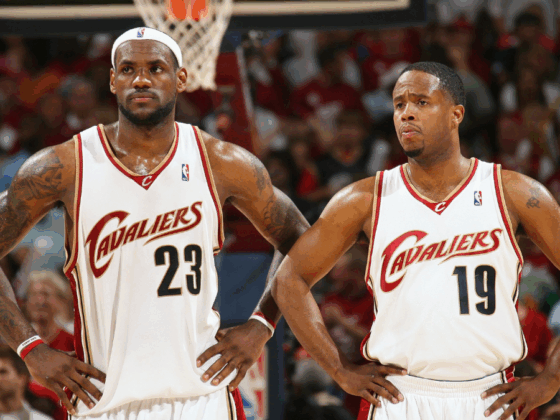
As we know, because of the increasingly profound revenue streams, new NBA player contracts have been climbing in value during the last few years. The salary cap for the upcoming 2017-18 NBA season is approximately $99.1 million which is about a 41 percent increase from the 2014-15 season. Without the context of this spike, NBA fans & other fans of major sports might scoff at non-starters who sign deals for eight-digit values. But this isn’t a forthright way to determine what’s a valuable NBA player. How might we evaluate which contracts are of good value, rather than simply accusing every front office of frivolous, imprudent spending?
In order to investigate whether a team is applying reasonable value to a targeted player, I chose to examine with Value Over Replacement Player, VORP ( a corollary of Box Plus-Minus), which is actually designed to estimate player value and work as a complement to raw basketball knowledge and honest evaluation of player performance.
VORP calculation via Basketball-Reference:
So, to calculate VORP, the formula is simply: [BPM – (-2.0)] * (% of minutes played)*(team games/82). This yields the number of points the player is producing over a replacement player, per 100 TEAM possessions over an entire season.
And further to substantiate the value of -2, as a replacement level standard, rather than a truly arbitrary concept as detractors might contend:
The conclusion was to establish -2.0 as replacement level for the NBA, measured in terms of points above or below average per 100 possessions. Unlike in major league baseball, players below replacement level do frequently play, primarily for development purposes. Rookies are frequently below replacement level, but there are no formal minor leagues to act as a development system like major league baseball has, so they end up getting playing time in the NBA in order to develop.
It’s also intended to work reasonably well with comparing whether one player contract is of good value relative to another player’s. While perusing BPM’s explanation and regression analysis report, the authors gave insight on how VORP ought to be evaluated with relation to a player’s salary:
The beauty of VORP is that like WAR in baseball, it should track linearly with salary. A player with a VORP of 4.0 is worth, on the market, about twice what a player of VORP 2.0 is worth. Sometimes good players play few minutes for reasons outside their control and would be worth more because they should be getting more minutes. Still, for a crude estimate, VORP is valuable.
Player A (the one with a VORP of 2.0) and his corresponding front office formed a less fruitful bond (or you could read it as the player with 4.0 VORP & his front office are more parsimonious).
VORP wasn’t, however (and this is where much of the resistance incites), built to serve as one of many metrics to average together and create a diluted player ranking system. To simply toss ridge regressed statistics together and then assert that a player is the 34th best thereafter somewhat undermines the statistical insights.
Because BPM is VORP’s “superclass”, we should contextualize a little further and then introduce our assessment. DBPM somewhat overvalues like DRB%* & a few interaction terms complicate the responses a bit; therefore, you often see players who don’t truly exhibit great defensive prowess (given film) with exceedingly stellar defensive box numbers– such as Russell Westbrook (3rd in DBPM w/ players above 1000 MP).
* – This notion is seconded by Adam Fromal of NBA Math when discussing his defensive points saved in his “Total Points Added” model
Contract Value Calculations
I sought to evaluate each signing with relation to VORP, player age and whether the player was given a 1-year “prove it” deal, so I represented those categorically.
For both quotients, I chose to use VORP and the contract’s value per year (for simplicity’s sake). The higher the value becomes, the more valuable the contract, in theory.
To calculate the Salary Quotient, I simply did the following:
- [Recent Year VORP/$ Per Year from new contract]
To calculate the Multiyear Salary Quotient, I simply did the following:
- [Recent 3 (or 2*) year average VORP/$ Per Year from new contract]
2* – If a player has been in the NBA for fewer than 3 seasons, then I’ll use 2 seasons for their multiyear quotient.
In the Tableau graph, you’ll see several other categories, I didn’t use these to factor into the quotient equations, but they’re simply extra variables to consider when posting whether the contract has good value. For example, there’s no rigid classification for the “New Team’s Status” category, but it should provide extra context. “Contending” won’t imply that a team has a double-digit percentage chance of winning an NBA championship, but the team operates as if conference championship/NBA championship positioning is feasible.
Then, of course, I converted to percentiles on the next page and gave a non-formulaic overall grade to provide a bit of closure.
The chart will have a few disputable “contract grades”, but I intentionally avoided the scheme fit in order to accentuate the VORP/salary bond. Adding scheme fit to the mold will yield more favorable grades for some players, less favorable for others, but that wasn’t the purpose of this particular discovery– it’s still obviously encouraged because we’d like to anticipate how each signee impacts 2017-18 on-court action.
All signings are as of 7/7. If you’re on mobile and cannot access the embedded application, then click here for the graph.






